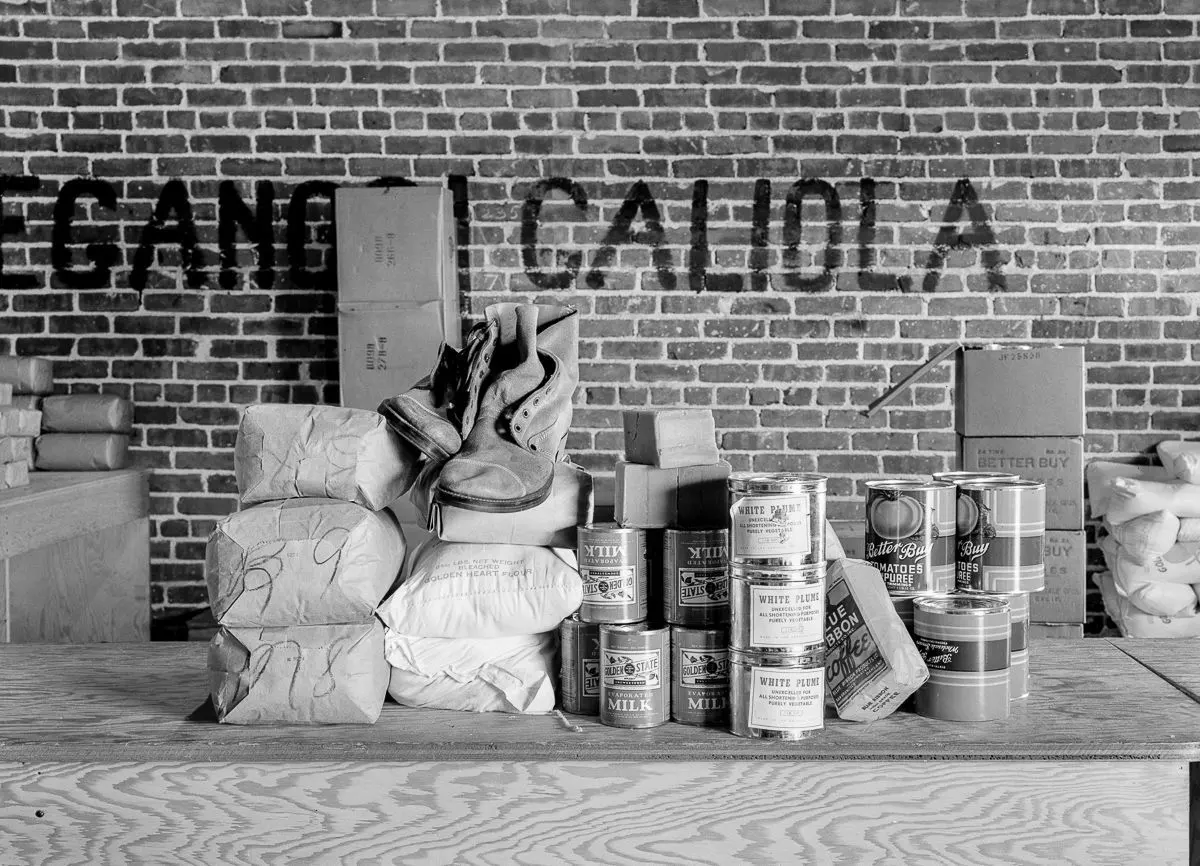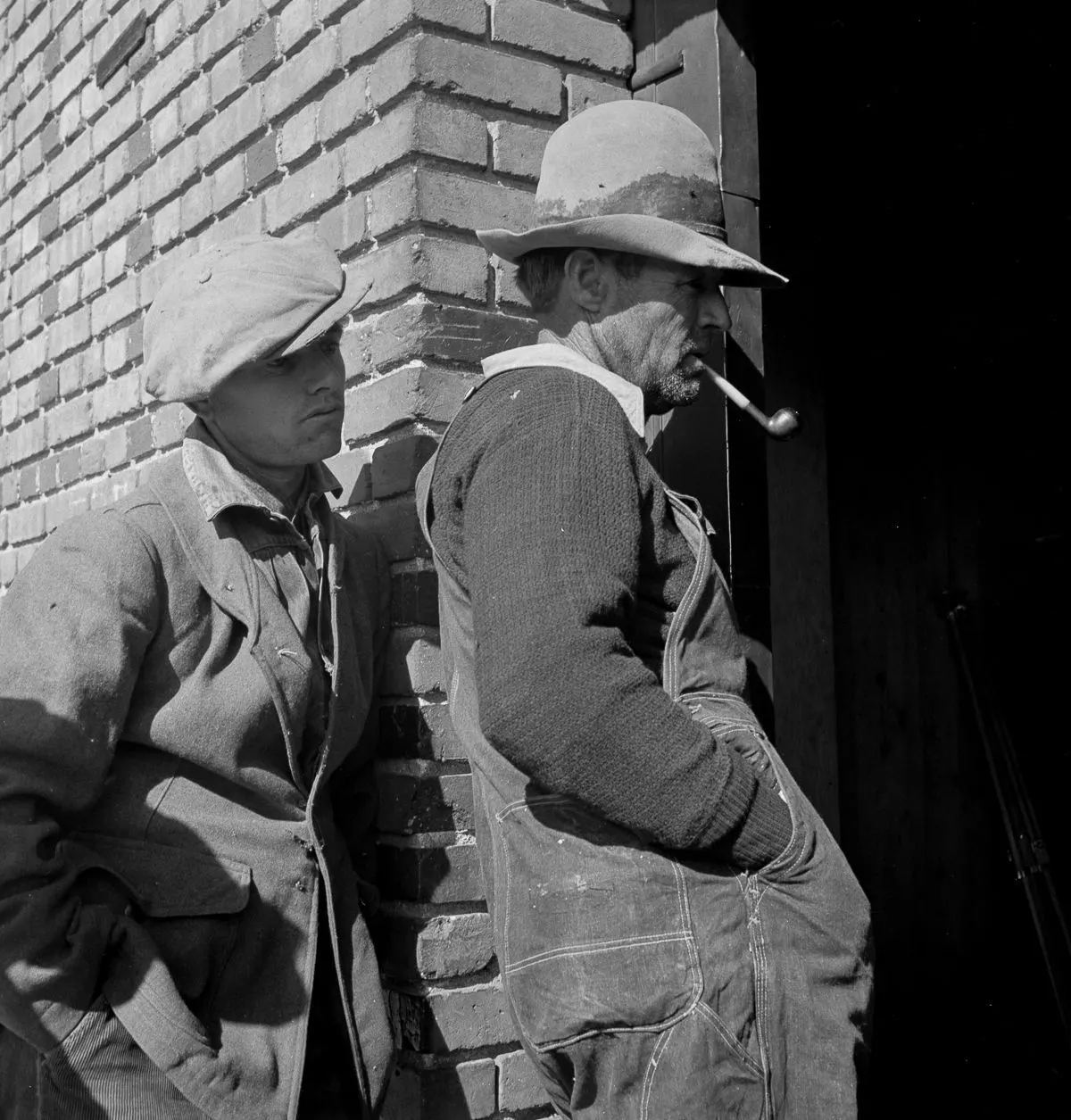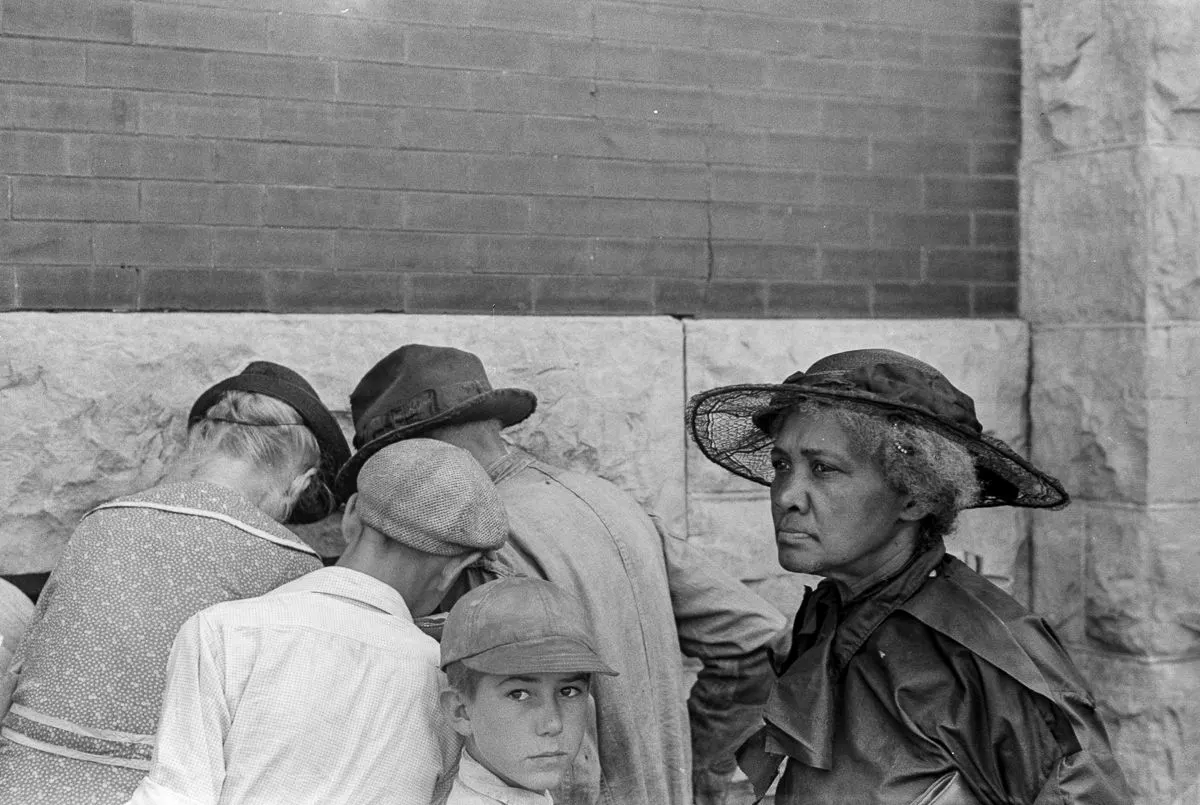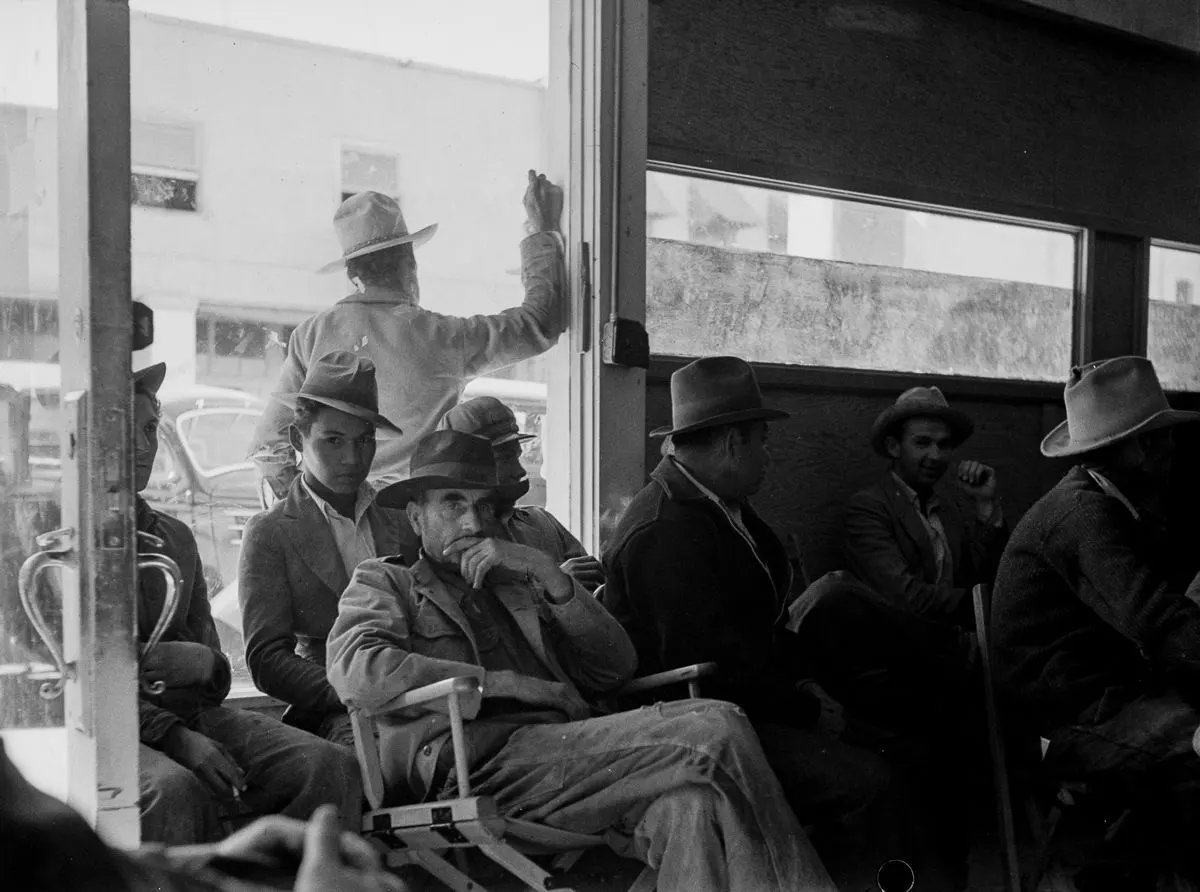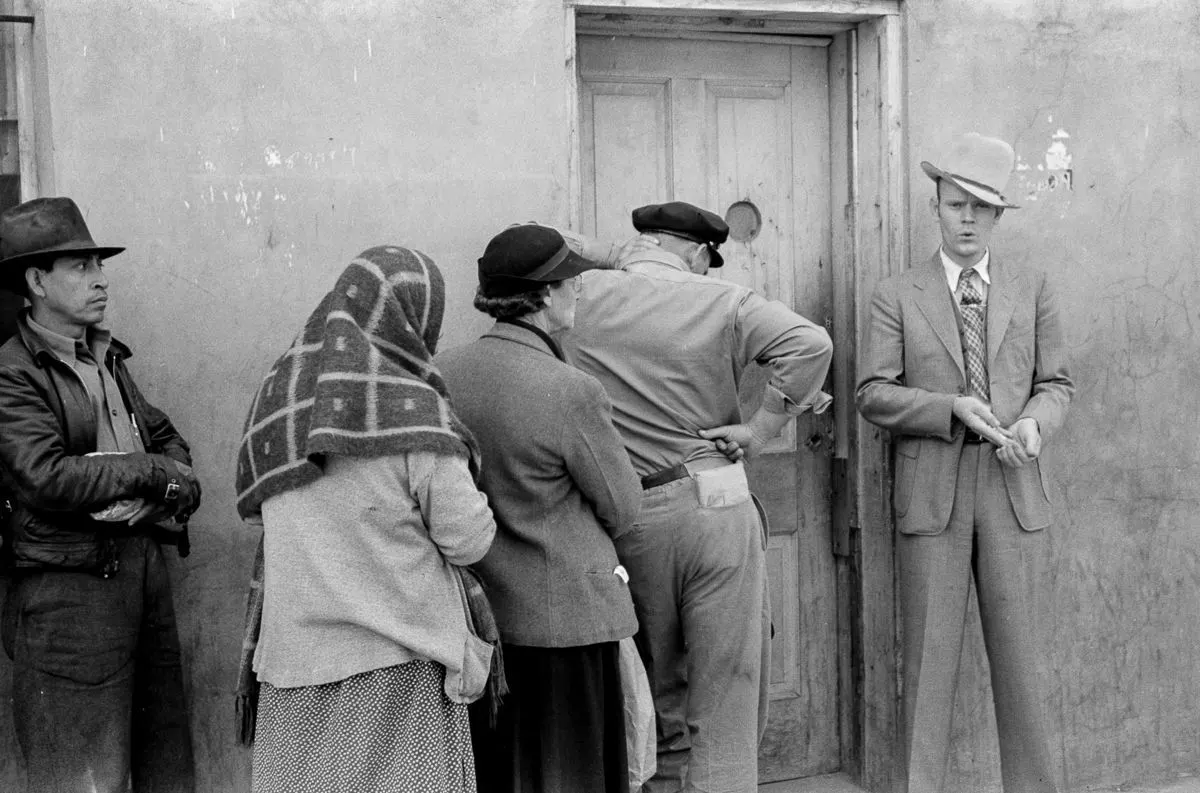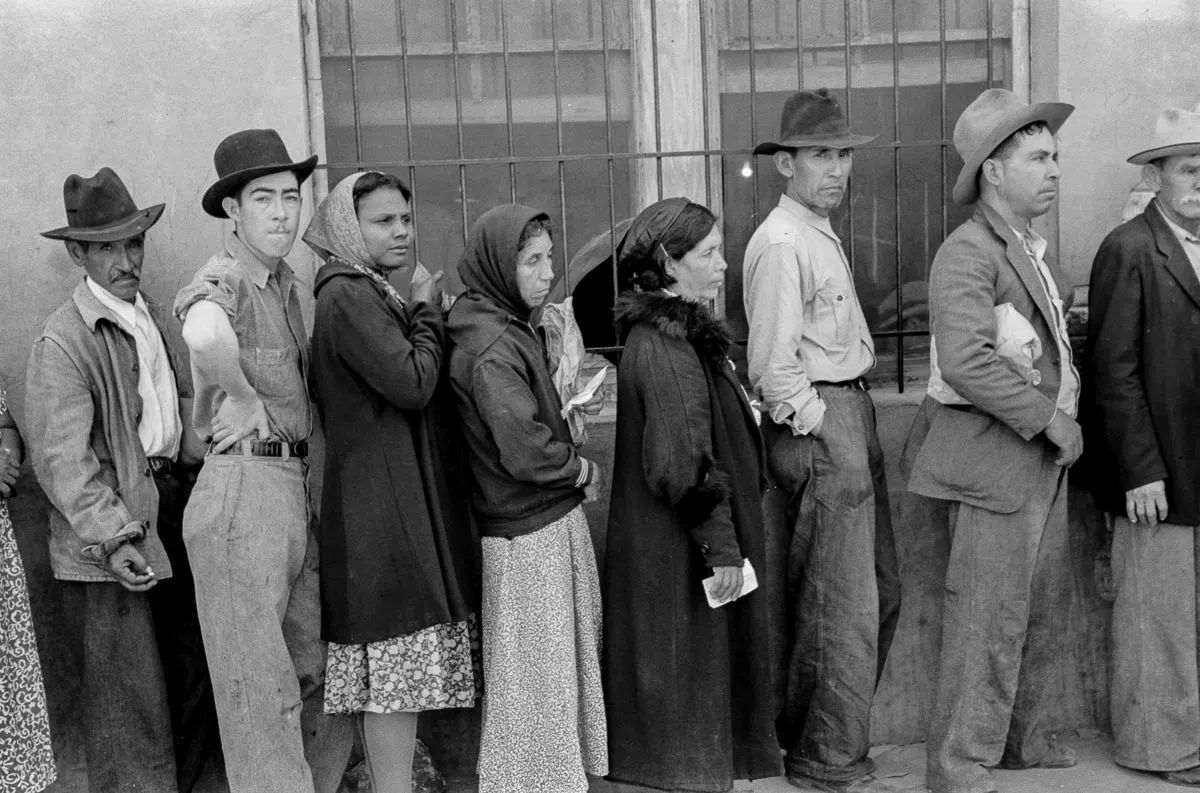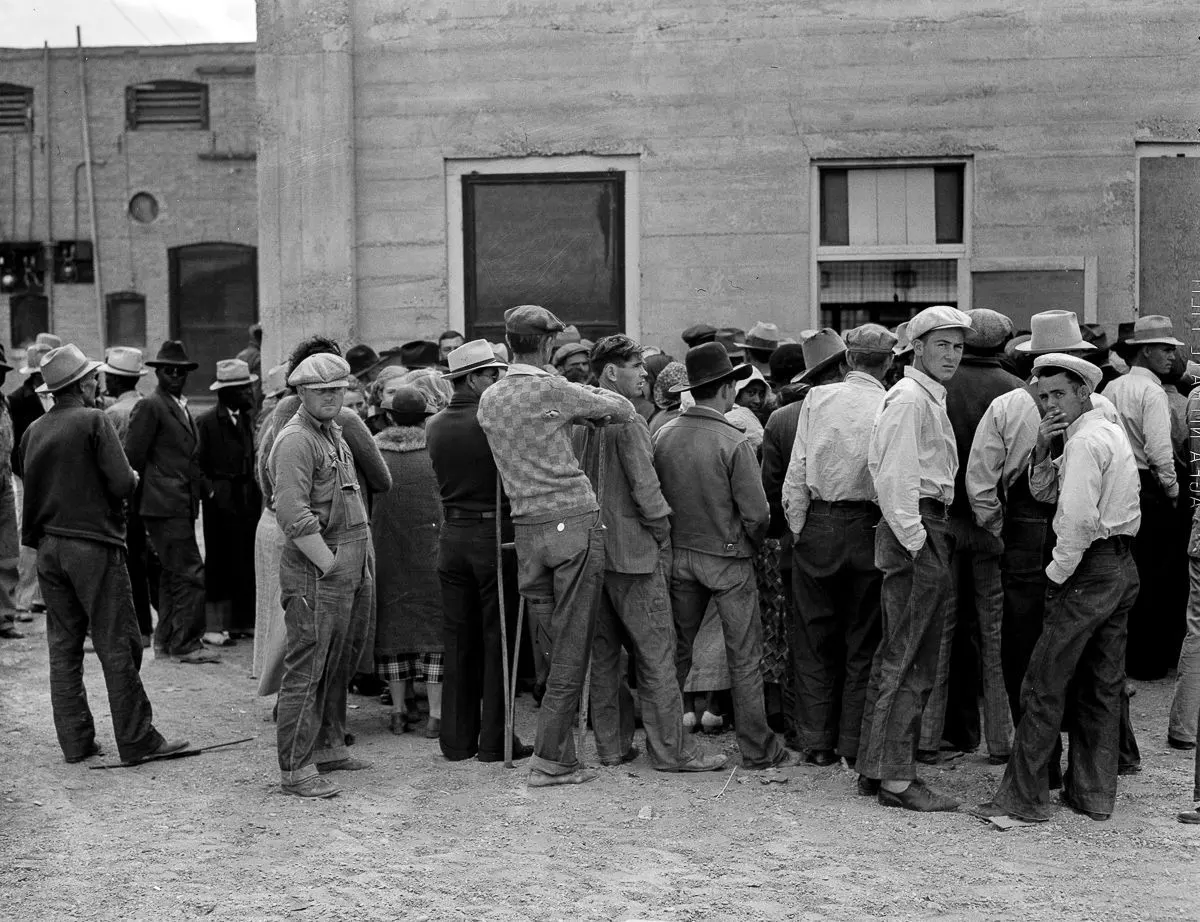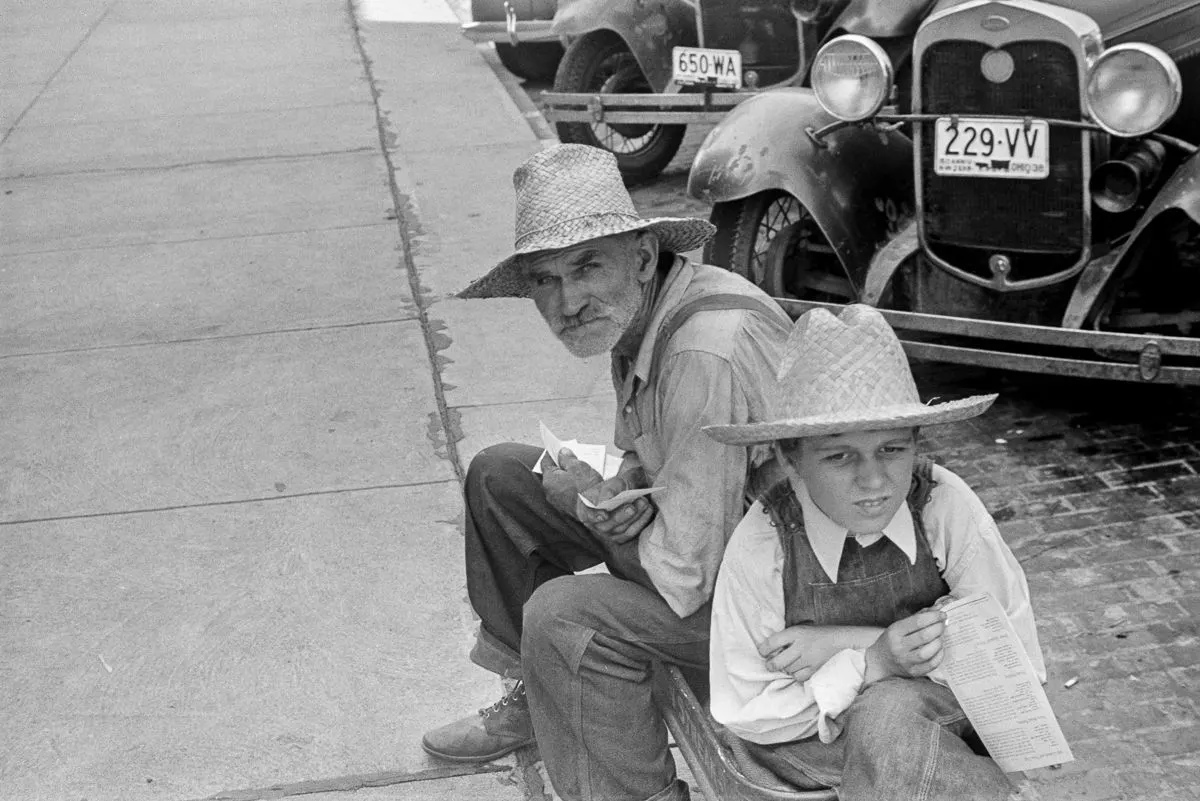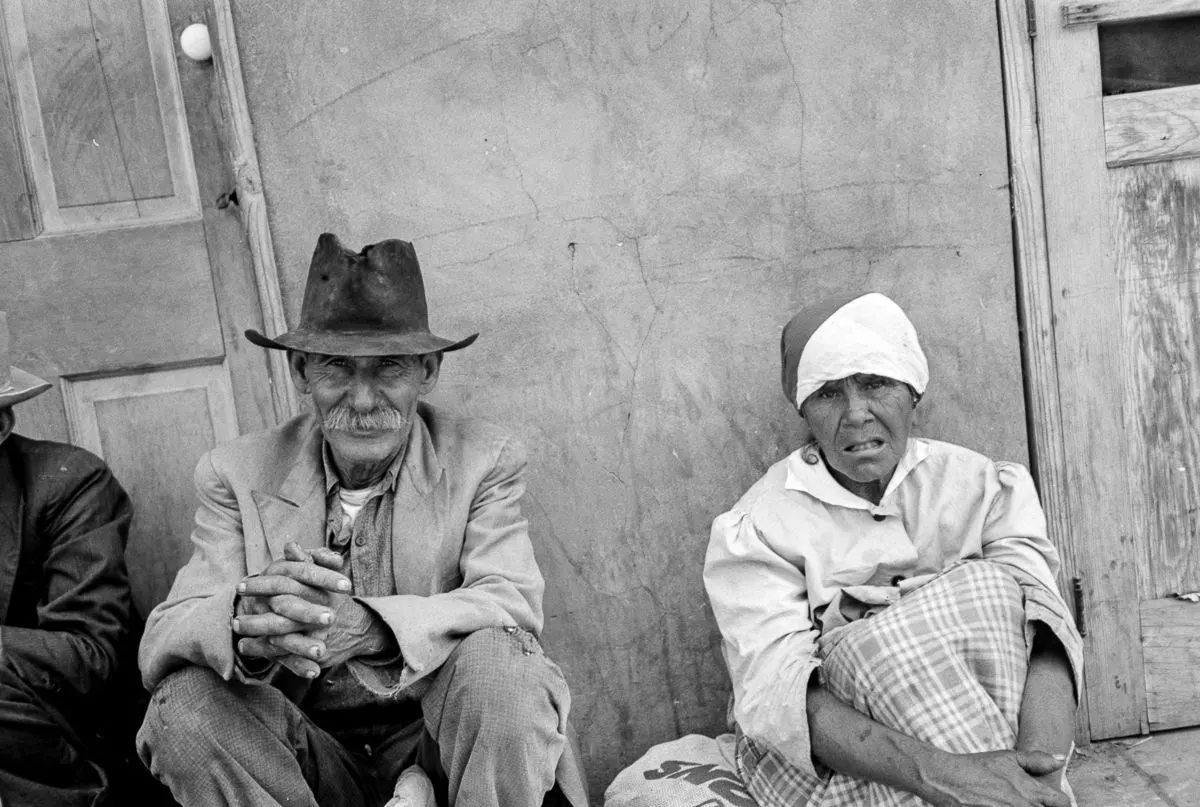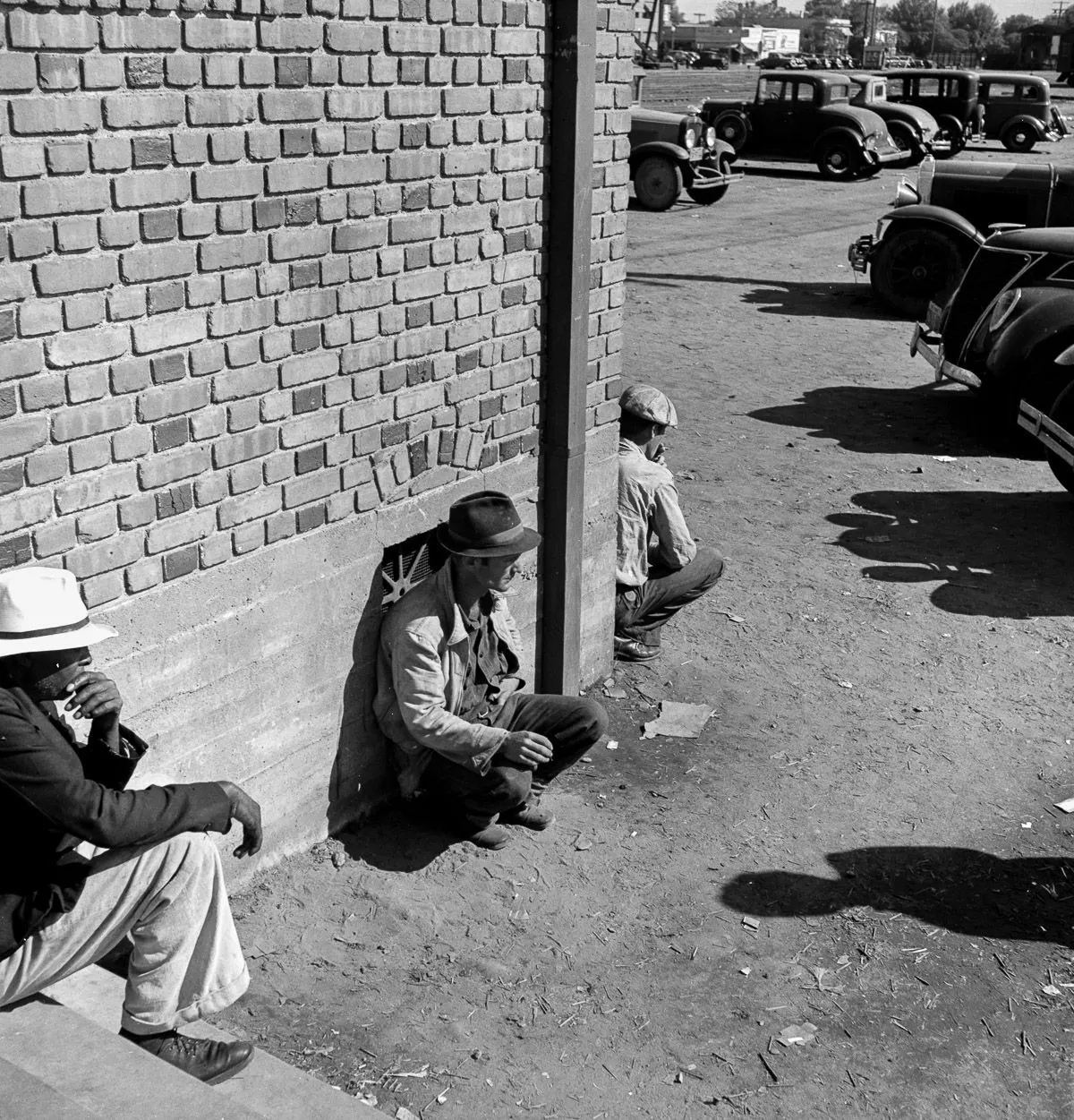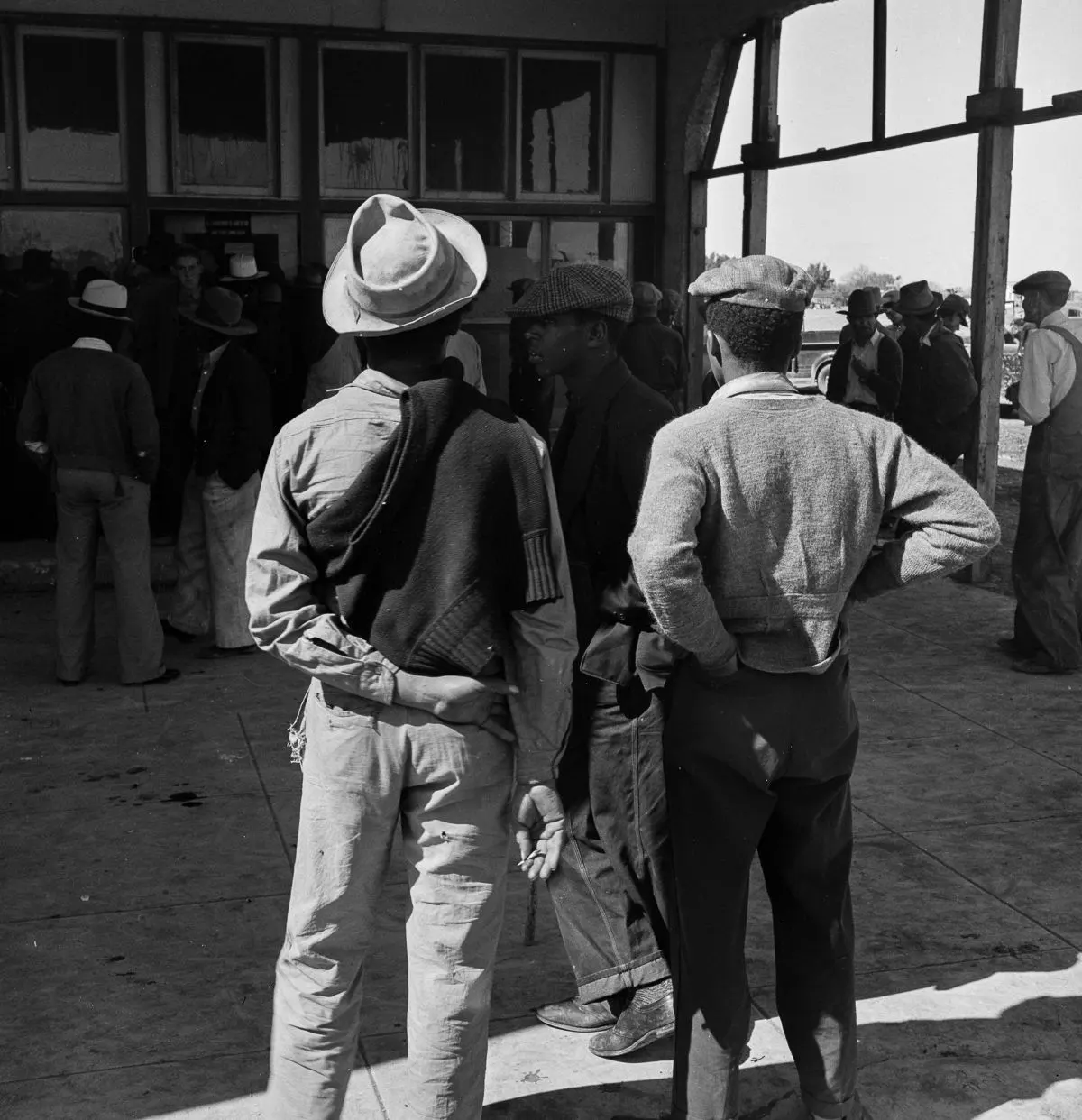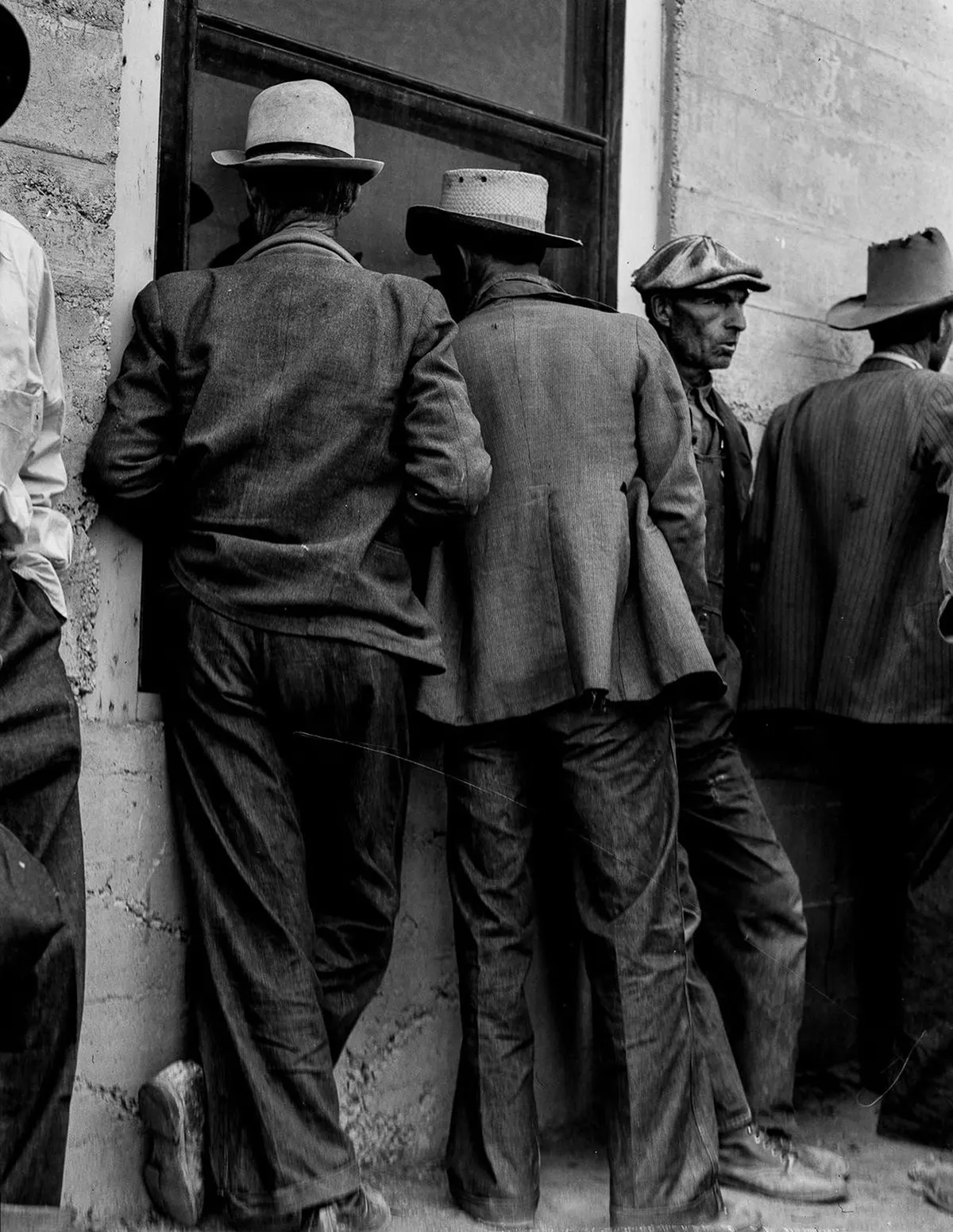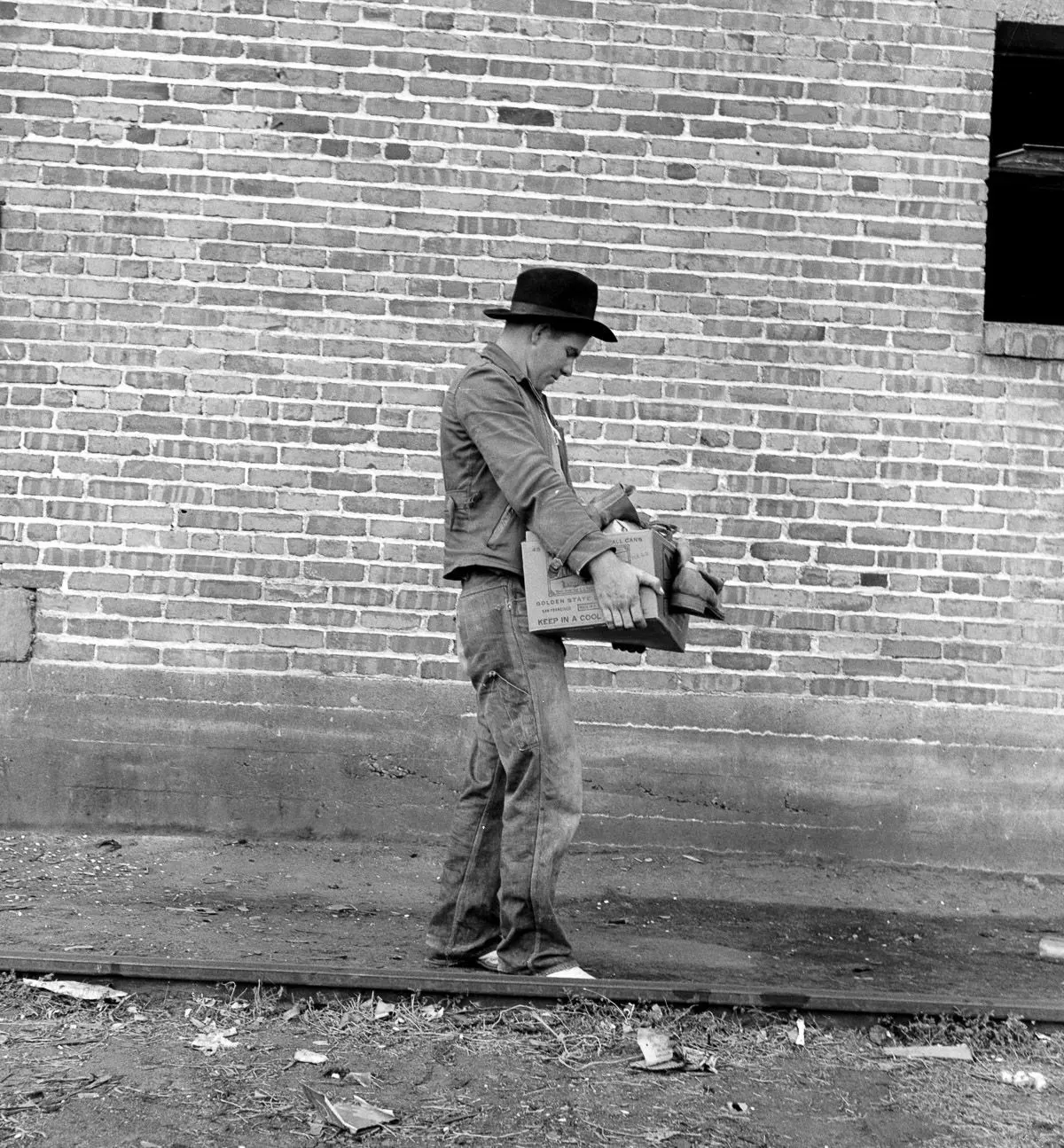In these poignant photos, the FSA photographers Dorothea Lange, Ben Shahn, and Russell Lee capture the acute anxiety and stasis of impoverished agricultural laborers as they wait in line for the emergency aids that will keep their families fed for another few days. The Farm Security Administration (FSA), created in 1937 under the Department of Agriculture, helped with rural rehabilitation, farm loans, and subsistence homestead programs. The FSA was not a relief agency, but instead, it relied on a network of cooperation between states and county offices to determine which clients needed loans that could not get this credit somewhere else. Farmers could use these loans to buy land, equipment, livestock, or seeds. Additionally, the FSA assisted families by providing healthcare, education, and training programs for participating families. The goal of these measures was to help families become self-sustaining. The average American family lived by the Depression-era motto: “Use it up, wear it out, make do or do without.” Many tried to keep up appearances and carry on with life as close to normal as possible while they adapted to new economic circumstances. Households embraced a new level of frugality in daily life. They kept kitchen gardens, patched worn-out clothes, and many went to sleep being hungry. The stress of financial strain took a psychological toll—especially on men who were suddenly unable to provide for their families. The national suicide rate rose to an all-time high in 1933. Marriages became strained, though many couples could not afford to separate. Divorce rates dropped during the 1930s though abandonments increased. Some men deserted their families out of embarrassment or frustration: This was sometimes called a “poor man’s divorce.” It’s estimated that more than two million men and women became traveling hobos. Prior to the Great Depression, most Americans had negative views of government welfare programs and refused to go on welfare. In some towns, local newspapers published the names of welfare recipients. While attitudes toward government assistance began to change during the Great Depression, going on welfare was still viewed as a painful and humiliating experience for many families.
(Photo credit: Library of Congress / Wikimedia Commons). Notify me of new posts by email.
Δ Subscribe

